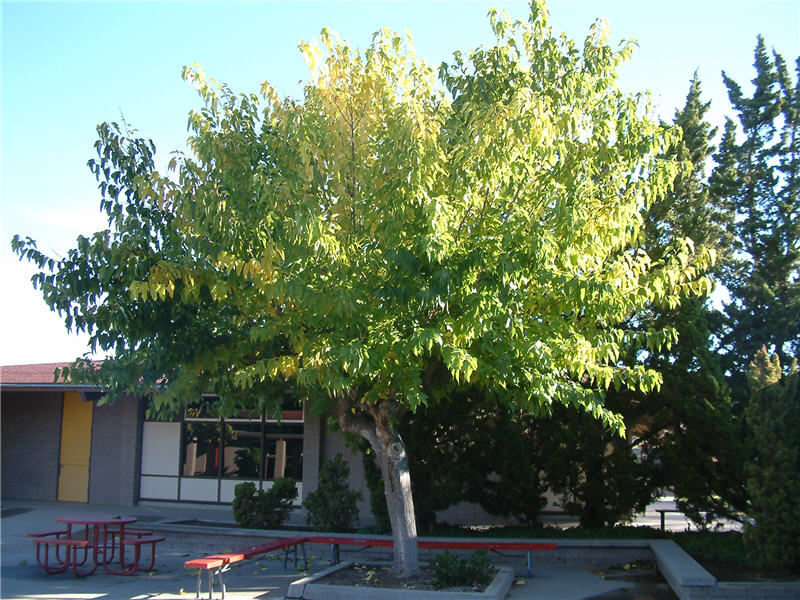Find plants
My list (0)
Mulberry, White Mulberry, Silkworm Mulberry
Morus alba
Qualifies for Tree Enhancement Program
Upright, dense, rounded to irregular habit. Medium to dark green, 2 to 7 inches long, simple to deeply lobed, broadly ovate leaves with serrated margins. Yellow-green catkin flowers appear before leaf-out. Fruited variety has white to pale pink-purple blackberry-like fruit. Fruit is edible. Tends to surface roots in turf settings. Fruited variety no longer sold due to the extremely messy fruit drop. Fruitless variety banned in Clark County due to the massive output of pollen and its effect on air quality and highly allergenic nature. Susceptible to bacterial blight, cankers, leaf spot, mites, powdery mildew, and scale. Invasive in parts of the U.S. Synonym: Morus tatarica.
- Special Note(s): No longer sold-sale and planting has been banned in Clark County.
- Width range: 35 Feet
- Native location: China
- Canopy value: 722 ft²
- Fall foliage color: Yellow, Green
- Flower color: Yellow, Green
- Flower season: Spring, Summer, Autumn, Winter
- Fruit color: Pink, White, Purple
- Fruit season: Spring, Summer, Autumn, Winter
- General foliage color: Green
- Growth rate: Fast
- Maintenance level: High, Medium, Low
- PH preference: Not Particular
- Plant type: Tree
- Seasonal habit: Deciduous
- Soil preference: Sand, Clay, Loam, Well Drained, Moist
- Sun exposure: Full
- Sunset zones: 2, 3, 4, 5, 6, 7, 8, 9, 10, 11, 12, 13, 14, 15, 16, 17, 18, 19, 20, 21, 22, 23, 24, 26, 28, 29, 30, 31, 32, 33, 34, 35, 36, 37, 38, 39, 40, 41, H1, H2
- USDA hardiness zone: 4b, 5a, 5b, 6a, 6b, 7a, 7b, 8a, 8b, 9a
- Water requirement: High
- Height range: 40 Feet
- Hardiness cold tolerance: -25 °F
New Search

